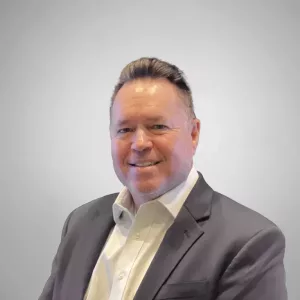As recently as 2021, 75 percent of providers admitted to using primarily paper and manual processes for collections. It’s unlikely to be a surprise that 70 percent of consumers say they receive medical bills via mail. Paper is slow and, given patient preferences for electronic communications for medical bills (57 percent) as well as online payments for medical bills (74 percent), it’s likely less effective.
That’s why more hospitals and health systems are using technology to improve their revenue cycle performance and early out billing, in particular.
What is Hospital Early Out Billing
Let’s start with a definition of early out billing.
Well-trained, patient-oriented representatives act as an extension of internal customer service and collection efforts, contacting your patients on behalf of your hospital billing office within a few days of their visit. They are able to help patients understand their bills, answer questions, and work out satisfactory payment arrangements. Successful hospital early out programs identify ways to prompt patients to pay on their account balances, through communication, education, and the development of flexible patient payment plans. Through high-volume efficiencies, early out programs are able to focus on patient collections at a lower cost.
Four Technologies to Improve Early Out Billing and Drive Hospital Revenue Growth
There are a number of technologies hospitals and health systems are using to improve early out performance:

An auto dialer is a type of software to automate the dialing of patient phone numbers and easily document the outcome of these calls. Dialers can automatically dial, determine whether the call was answered by a person or a voicemail, and can either play a message or connect the call to a person, increasing talk time, reducing idle time, and improving patient experience. Dialers can also be used to distribute recorded messages through interactive voice response (IVR), push notifications, and SMS.
The advantages of using a dialer system include:
- The choice of whether to use inbound, outbound, and blended call environments that can accommodate live professionals and messaging campaigns,
- Automatically populating patient information in the caller screen the moment a call comes in, increasing staff efficiency,
- Reducing hold times, which in turn, increases patient satisfaction.
The best dialer software empowers revenue cycle professionals, boosts a hospital’s outbound calling strategy, promotes workflow automation, and ultimately improves early out results.

It’s understandable that many hospitals and health systems choose to prioritize collecting efforts according to balance, focusing efforts on patients with larger balances. Savvier organizations use scoring, segmentation, and propensity to pay to determine revenue cycle priorities. Multiple datapoints and sources such as financial status, background, behavior patterns, credit history, patient payment history and more are used to predict the likelihood of payment and the most appropriate follow-up for collections. Collection processes can differ in terms of the number and timing of letters, the frequency and intensity of calls, texts and emails, and more. Proprietary data and public records are used to forecast the probability of how, when and how much a patient can be expected to pay.
Scoring self-pay accounts and prioritizing or segmenting them using expected cash value and payment behavior enables revenue cycle staff to more effectively work these accounts and ultimately collect more revenue.

Speech analytics technology helps revenue cycle leaders understand how their staffs interact with patients. Typically, it’s a cloud-based software solution that records all patient interactions for monitoring, scoring, and analysis of patients’ financial satisfaction. Speech analytics uses natural language processing and voice algorithms to determine call sentiment, track keywords and phrases that indicate high-level call trends and sentiment, and alert managers to escalated calls.

It’s telling that when asked ‘in which industry do you believe the process of making a payment is most difficult for consumers,’ healthcare tops the list. Healthcare stands at 46 percent followed by telecom/utilities at 14 percent and airlines at 11 percent.
The overwhelming majority of patients (74 percent) prefer online payments for medical bills. A smaller majority (60 percent) say how they’re notified about bills impacts how quickly they pay. Some patients (44 percent) pay medical bills faster when they receive digital or phone notifications about billing, and nearly half (49 percent) would pay by text if available. When patients were asked which payment methods they want their medical provider to offer and support, they said:
- 48% of patients want contactless credit or debit card
- 31% want Zelle®, Venmo®, PayPal® or a similar online money transfer services
- 26% mobile wallet
- 17% pay by text
- 13% QR codes
Digital payment options are even more important when patients opt for a payment schedule, e.g., 24 monthly payments of $75 on the 15th, to reduce time involved and administrative burden for providers and their patients. They also feature the ability for patients to make payments 24/7.
Another feature popular with patients is chat functionality built into the payment portal. It’s quite common in other industries and becoming more so in healthcare.
Increasingly, hospitals and health systems are strategically using technology to improve early out billing and their revenue cycle performance. More than half (56 percent) say they are adopting automation technologies and 44 percent are partnering with a strategic revenue cycle management company. At a time when most hospitals (92 percent) report a shortage of revenue cycle professionals and nearly half (48 percent) experiencing a severe shortage, technology solutions offer a way to optimize the use of limited revenue cycle professionals for higher-order decision making, allowing automation and technology to manage the more mundane RCM activities.





